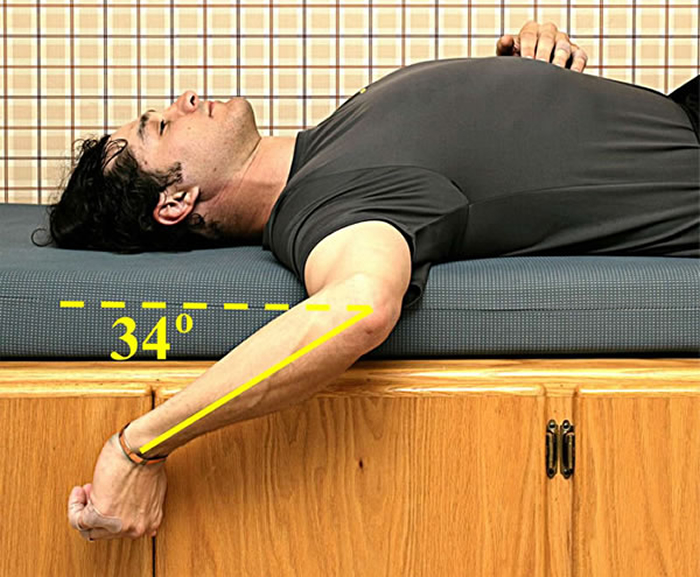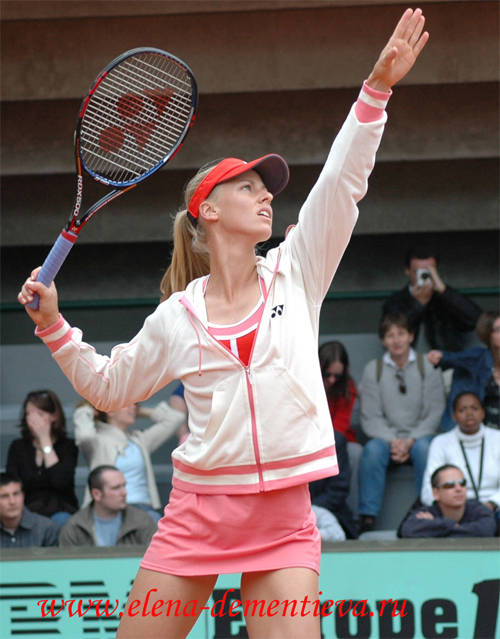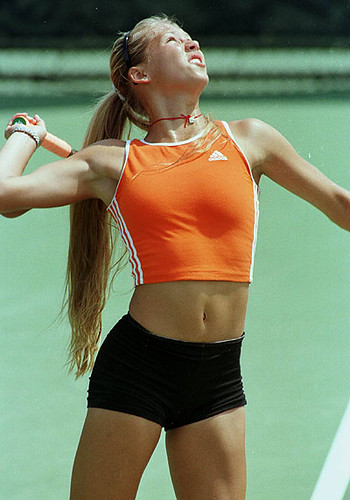Grip: Typically, all strokes at the net use some variation of the
continental grip. However, a semi-continental (Aussie) grip could be employed as an alternative if you are having an issue with the continental. If at all possible, use a continental. You might need to choke up slightly in the grip. Players who hold the racket handle at the very edge (butt) when at the baseline, will sometimes use a slightly shorter grip so that they are a bit quicker at the net.
Turn/
Coil: You should be turning your torso (chest) 90
°. This is somewhat less coil than top players use for the serve -- as it should be, However, you do not always turn 90
° on your overheads in the video. Note that the hips can also be turned 90
°. But this is not absolutely necessary. Note that Myskina has not coiled her hips as quite as much as her torso. However, you should not leave your feet in too much of a open stance. The stance should be neutral or semi-open (as Myskina empoys. in the image above).
Positioning: The left hand points to the incoming ball as seen in the image above. The left hand is actually held slightly to your right. You do this to line your body properly to the incoming ball. You want to position yourself so that you are contacting the ball slightly to the right when you uncoil.
You can practice the proper positioning with the ball machine. Get yourself into an "overhead" trophy position (like in the image above). Stay in this position but move your while body, staying side on, so that you can catch the ball in your left hand (instead of swinging at the ball). When you catch the ball, the left hand should be slightly to your right as 'i mentioned previously.
Do not move your left arm to catch the ball -- move your whole body.
Shoulder Tilt: The shoulders should be tilted as seen above. This shoulder tilt might be somewhat less than a shoulder tilt for a serve. The (upward) extended left hand sets the left shoulder higher than the right shoulder. The right elbow should be directly in line with this shoulder tilt. Mykina's right elbow is slightly lower than it should be, ideally. Better to have it more in line with the shoulders. Yours, OTOH, tends to be higher than it should be. Myskina's (slightly) low right elbow is preferable to your high elbow.







